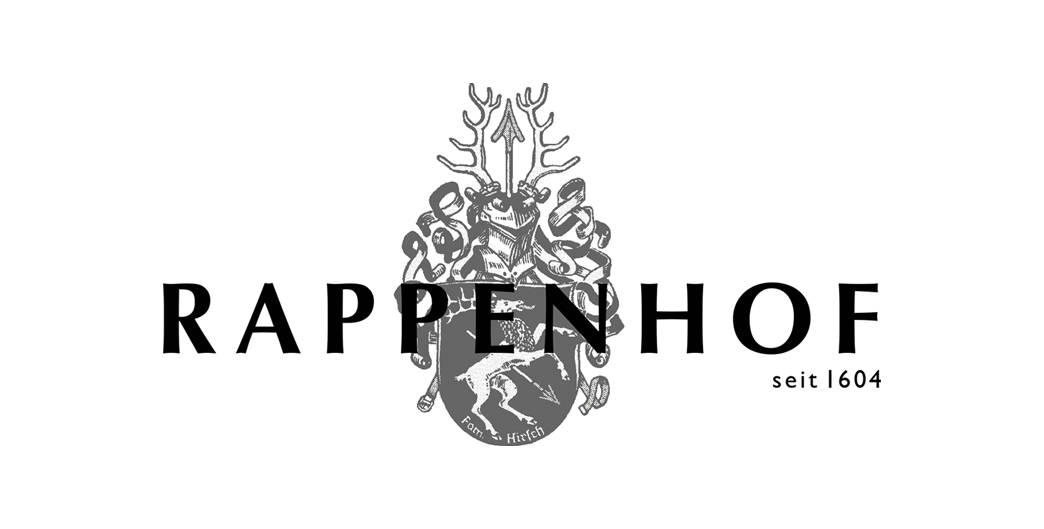
TRADITION, AWAKENING
AND 400 YEARS OF FAMILY HISTORY
The history of the Hirsch-Muth family goes back a time – more than 400 years ago – around the turn of the 16th to the 17th century. Unfortunately, wars, destruction, and a great fire led to a gap in the documentation of our family history. Although sources are proving that growing wine was already practiced in our family in Alsheim before, we celebrate the year 1604 as the founding year of our winery today.
Our founding father, great-grandfather, and 1st generation winemaker was HIERONYMUS HIRSCH. The historic family crest of the Hirsch family still adorns our labels today.
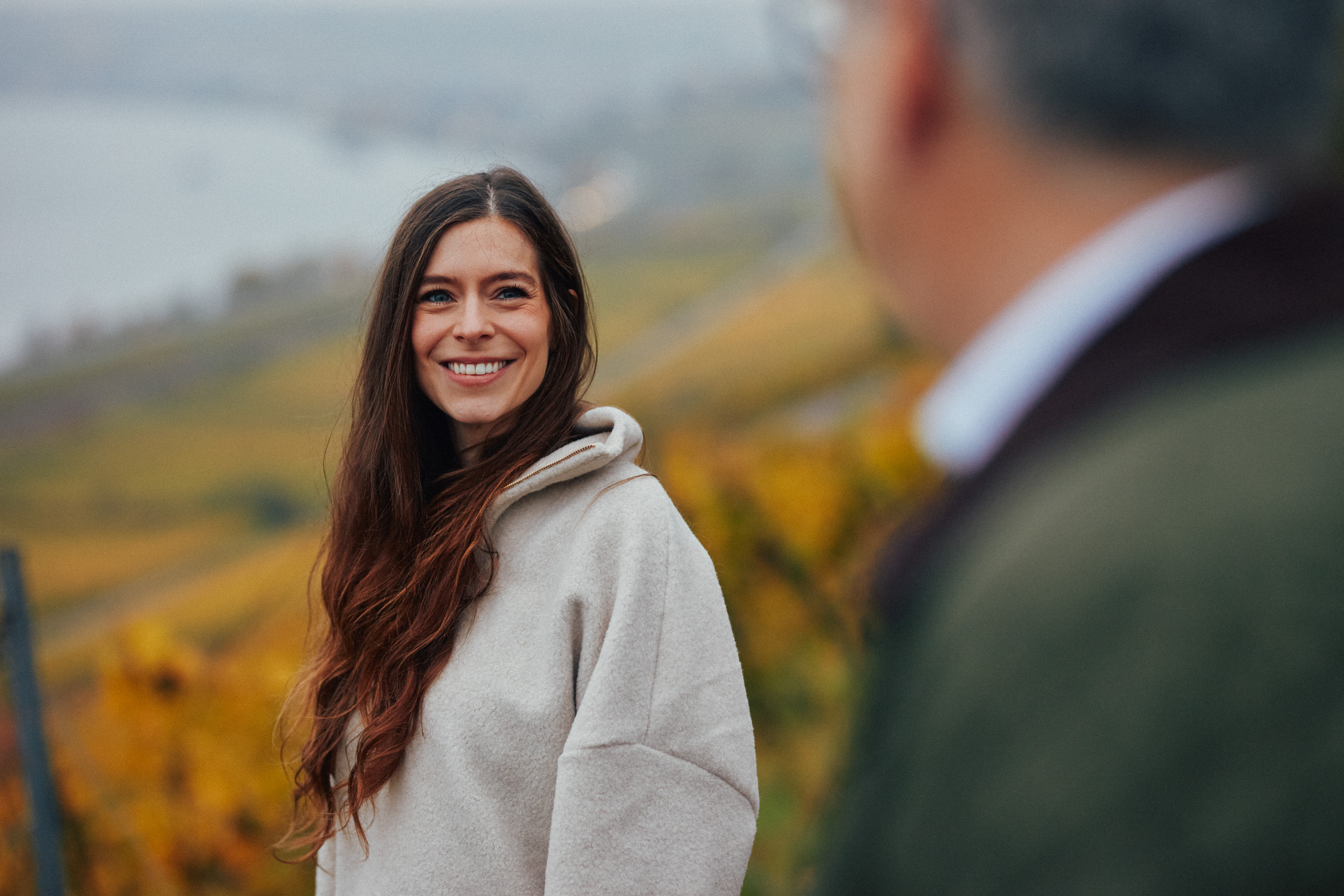
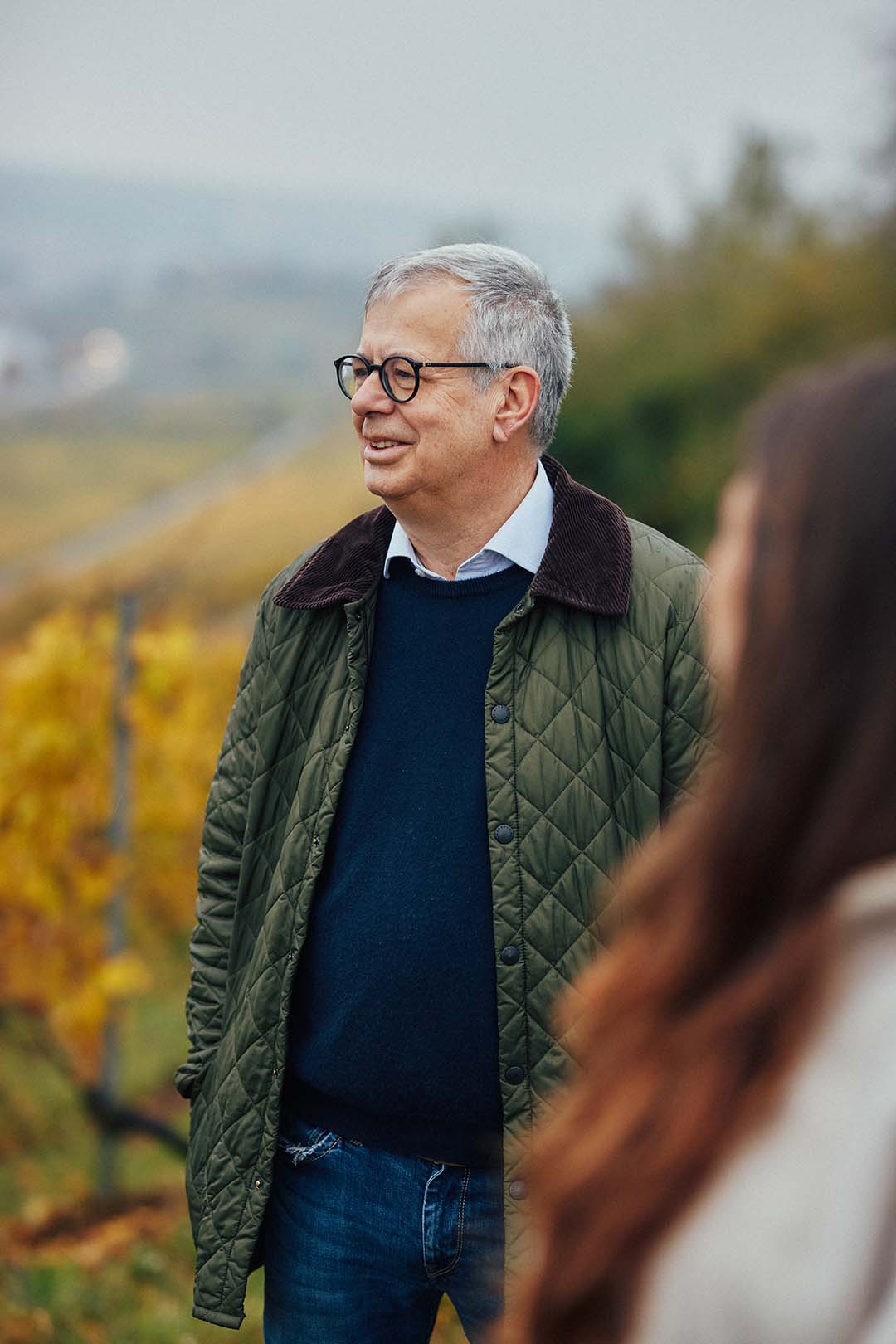
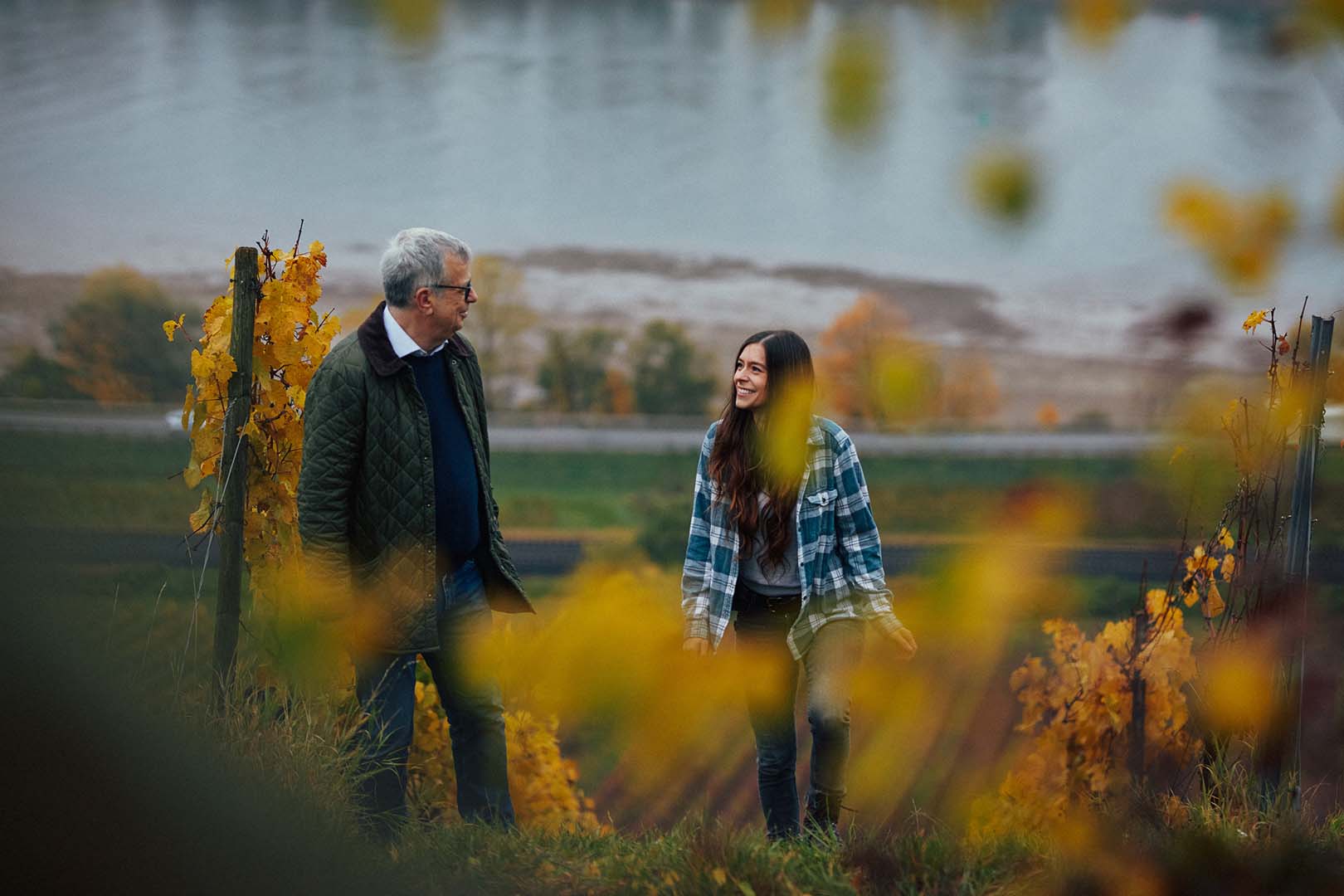
THE FAMILY
BIODYNAMICS, THE VDP
AND RAPPENHOF INTERNATIONAL
Today, the winery is still owned and managed by the family – with my father Klaus Muth in the 12th generation and me in the 13th.
KARL HIRSCH, my great-grandfather and 10th generation, was one of the first winegrowers to work biodynamically in Rheinhessen and to orient his viticulture according to RUDOLF STEINER and the lunar calendar after he had completed his studies in agricultural science in Hohenheim. For the sake of producing his own natural fertilizer, he kept his own dovecote, which gave him a certain notoriety in terms of sustainable farming.
His successor, son-in-law, and generation 11, my grandfather, DR. REINHARD MUTH, brought German viticulture in general and also our winery in particular, to the top on a national level for many years as German viticulture president. Under his leadership, the winery became a member of VDP (Verband Deutscher Prädikatsweingüter), in 1971. The association of the German wine elite stands for wines of individual signature, origin, and exceptional quality, coming from the best sites in Germany.
My father, Generation 12, KLAUS MUTH, himself a lawyer, brought our winery to the top on an international level. He recognized early on, that Riesling in particular, which grows here on our soils, is unique and he was one of the first to sell GG wines (VDP.Grosse Gewächse) to the Far East. Especially in the Asian region, the brand Rappenhof is indispensable.
ARCHITECTURE, TECHNE
AND THE INDOMITABLE NATURE
I, myself, returned to join our family business after 10 years in Darmstadt, Zurich, and Munich and have been running our winery, together with my father, ever since. Before joining the winery, I studied architecture and worked for several years as an ARCHITECT in the field of residential construction. The years I spent away from the wine industry, were tremendously important to me. Similar to my father, I still perceive it as very positive to have worked temporarily in another field, as an opportunity to gain experience, as a source of inspiration, and to look beyond one’s nose.
Through me, our viticultural focus has returned a little more from thinking broadly to going into detail, which is certainly due to my architectural past: a solid building stands and falls with the detail. Also, TECHNE, the convergence of art, science, and technology, which was my constant companion in architecture, can be applied to winemaking.
A correct and contemporary technique is crucial – both in the vineyards and in the field of cellar work – and the special and individual handwriting that we as winemakers give our wines can certainly be called art in a figurative sense.
However, the most important aspect of viticulture plays only a rather subordinate role in architecture and that makes probably the biggest difference between my two professions. It is NATURE.
As winemakers, we are completely dependent on it. We cannot influence it, we can only respond to it. As a result, every vintage is different and every wine from every single vineyard is unique each year. There are outstanding years, there are average years and there are years in which yield and quality are greatly reduced due to a freak of nature in the form of frost, hail, dry periods, or heavy rain, to name just a few examples.
QUALITY, INDIVIDUALITY,
AND TOGETHERNESS
Natural agriculture and sustainable viticulture are more relevant than ever. MAN, IN HARMONY WITH NATURE. A give and take in a healthy relationship.
It is about understanding the soils, being able to read their needs and support them through care and natural nutrient supply, and also being able to recognize when to give them rest. It’s about accompanying the vine in its growth, proper foliage management, yield reduction in the vigorous summer months to take the pressure off the vines, and ultimately the perfect harvest time for the grapes.
It‘s all about the DETAILS. The same applies to the development in the cellar. Because the basic structure of the wines is already there and is unchangeable with the act of harvesting. In the cellar, we hardly intervene at all. Ultimately, it is only a matter of deciding how we can best support the development process of what nature has given us. Which barrel is right for which wine, how long the aging process should last, and how should the individual wine components be combined?
Our wines stand and have always stood for quality, for individuality. The RHEINHESSEN RIESLINGS are absolutely unique and the goal is to be able to preserve this cultural asset and the landscape, our vineyards, in which our grapes grow, for future GENERATIONS.

THE VINEYARDS

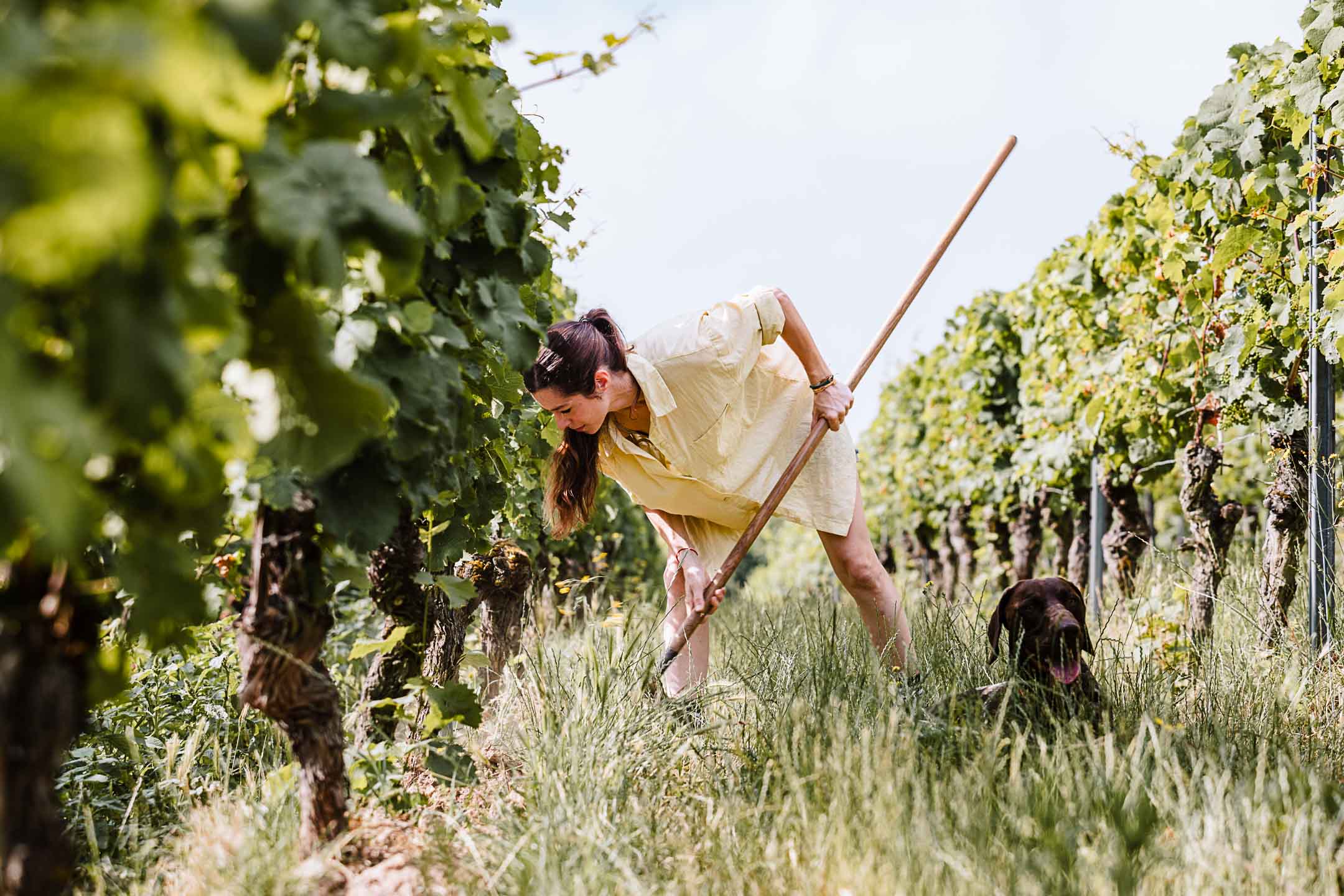
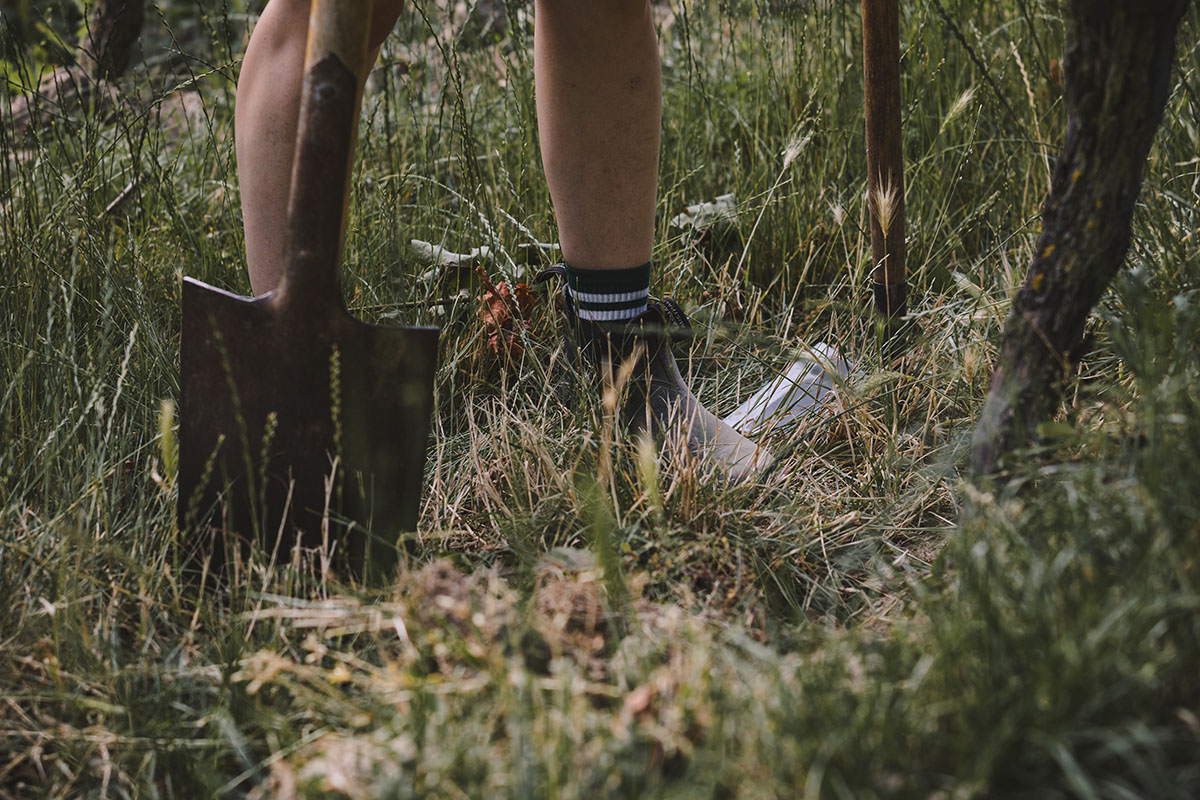
LOESS, LIMESTONE
AND RED SLATE*
Our vines grow on ancient loess terraces in Alsheim, uncrafted.They have survived the phylloxera plague, the Rheinhessen land consolidation and a world war and are now already being cultivated in the fifth generation in our family.They grow on hanging loam and sparse limestone rock, with a view of the historic architectural ensemble of Landskron Castle and the Gothic church of St. Katharinen in Oppenheim. And they grow on the Rhine in Nierstein. On the steepest slope in Rheinhessen, the Rote Hang, on *Rotliegendem, a single-oxide red shining clay slate. The slopes there are so steep that they force us to do almost completely without the work of machines and – quite originally – to be able to cultivate the vineyards almost exclusively by hand.
SUSTAINABILITY, BIODIVERSITY
AND OLD VINE
Our greatest assets are our vines, our vineyards and our nature.We must preserve them for future generations through sustainable viticulture, resource-conserving management practices and the promotion of biodiversity. Less is more – this is true not only with regard to the aging of the wines in the cellar, but also with regard to the intervention in the natural processes in our vineyards. Every vineyard has its own needs, every grape variety different demands. It is necessary to understand them, to internalize them and thus to support them in the best possible way.We try to preserve our plants, the OLD VINES, out of love for what generations before us have created and preser- ved.And we get something back,because the flavors that OldVines give to wine are so much more complex. WE RECAP WHAT WE SOW and a sensitive and respectful approach to our vineyards guarantees us healthy grapes, which is the basis for wines of exceptional quality.
ALSHEIM
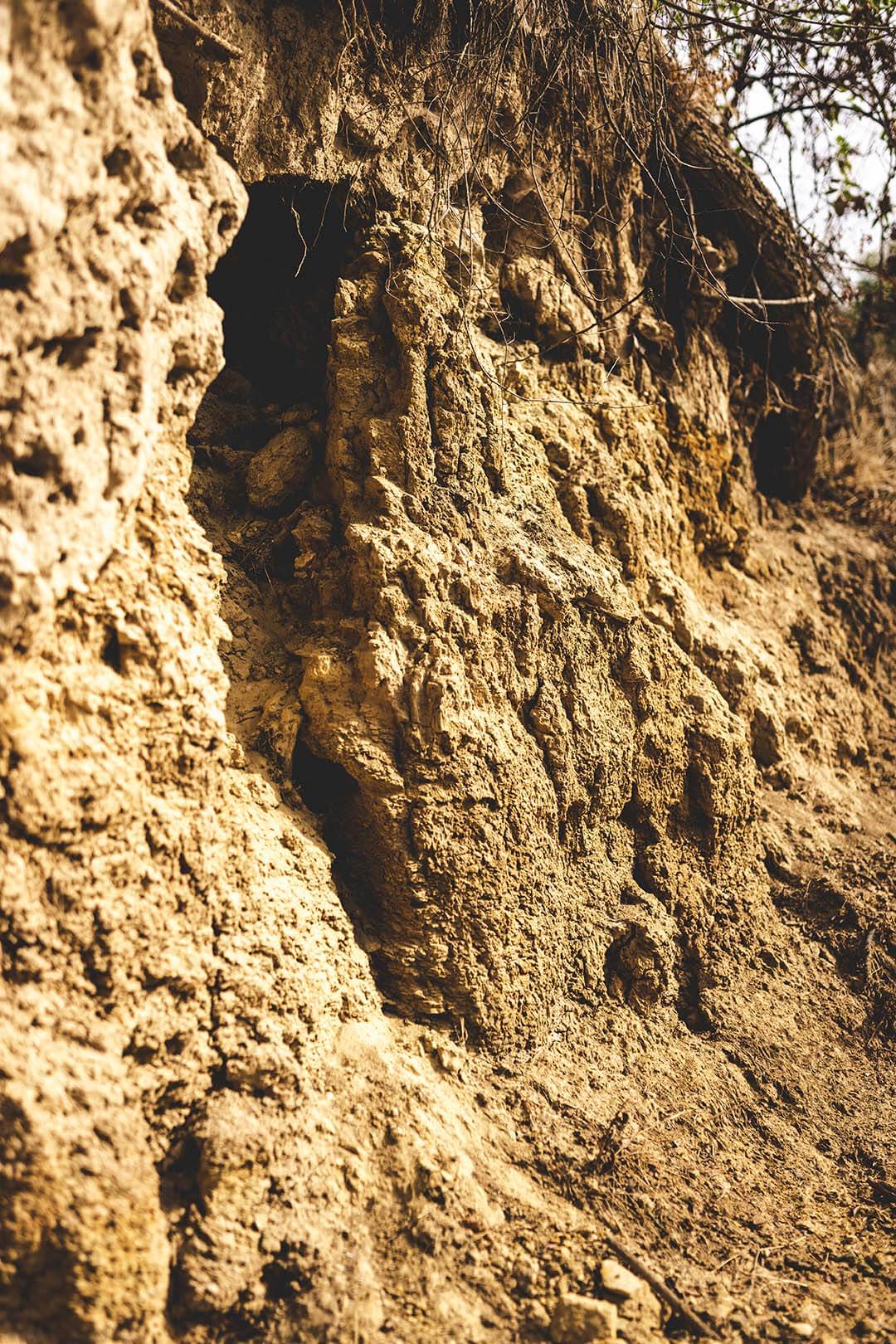
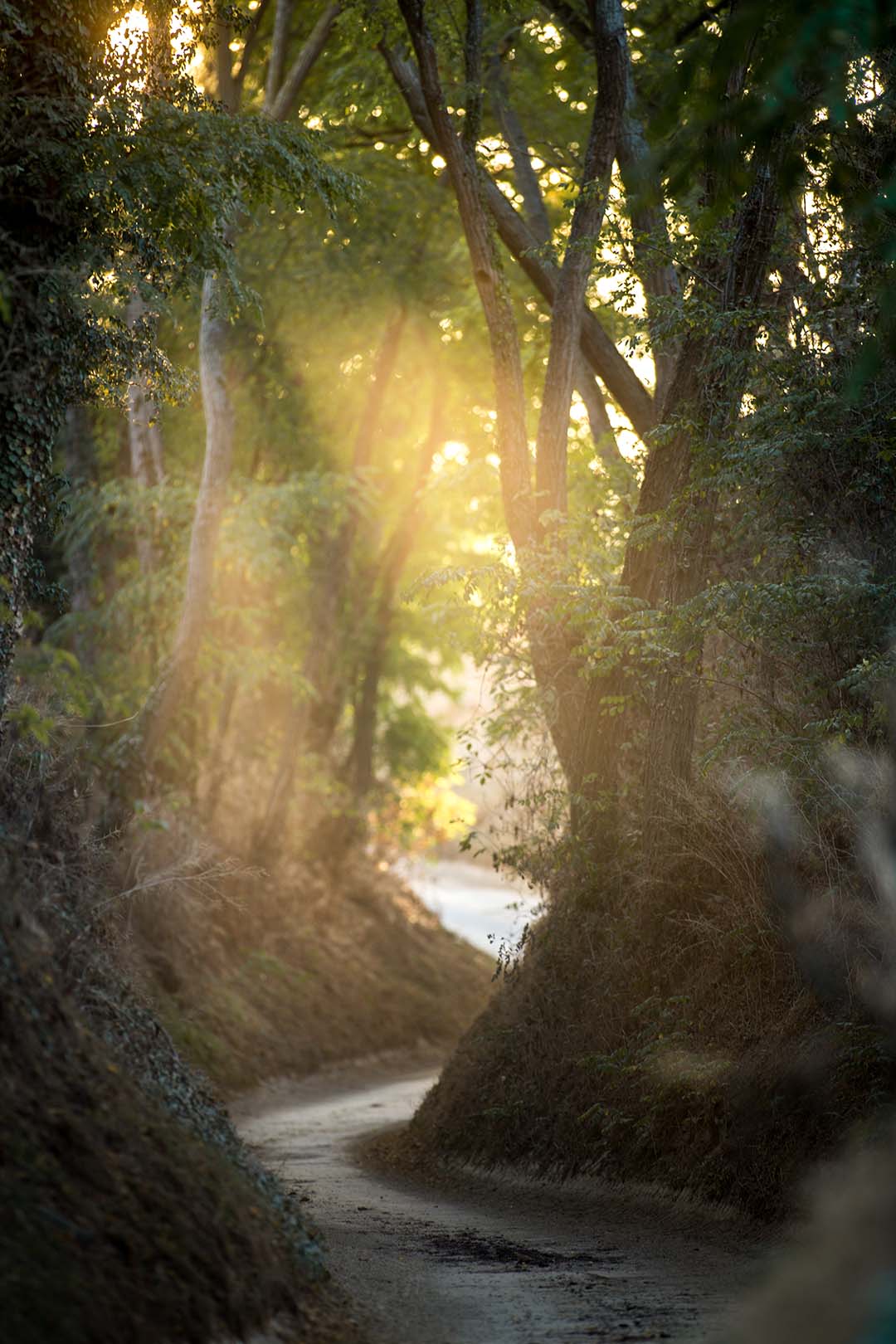
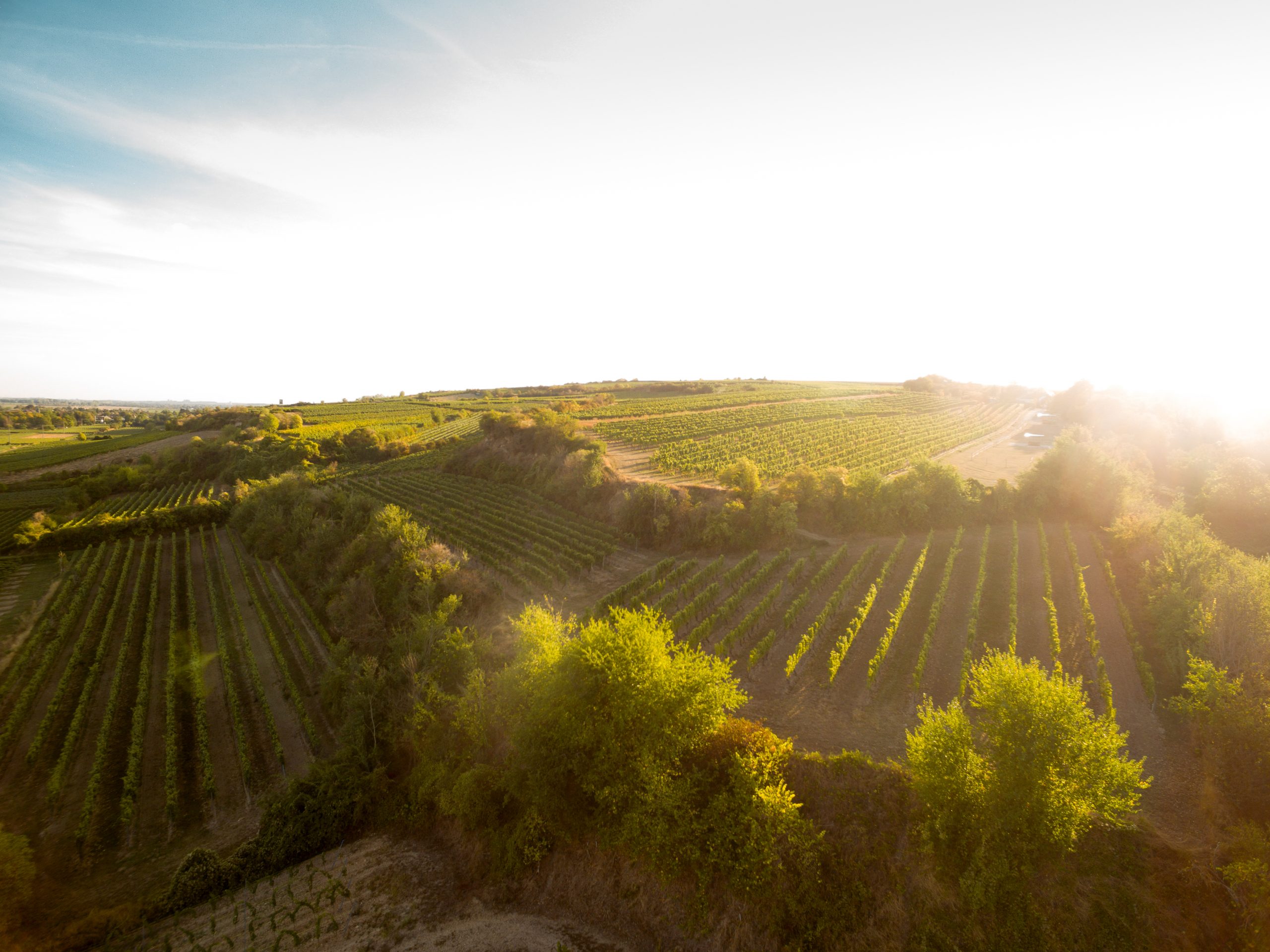
OPPENHEIM
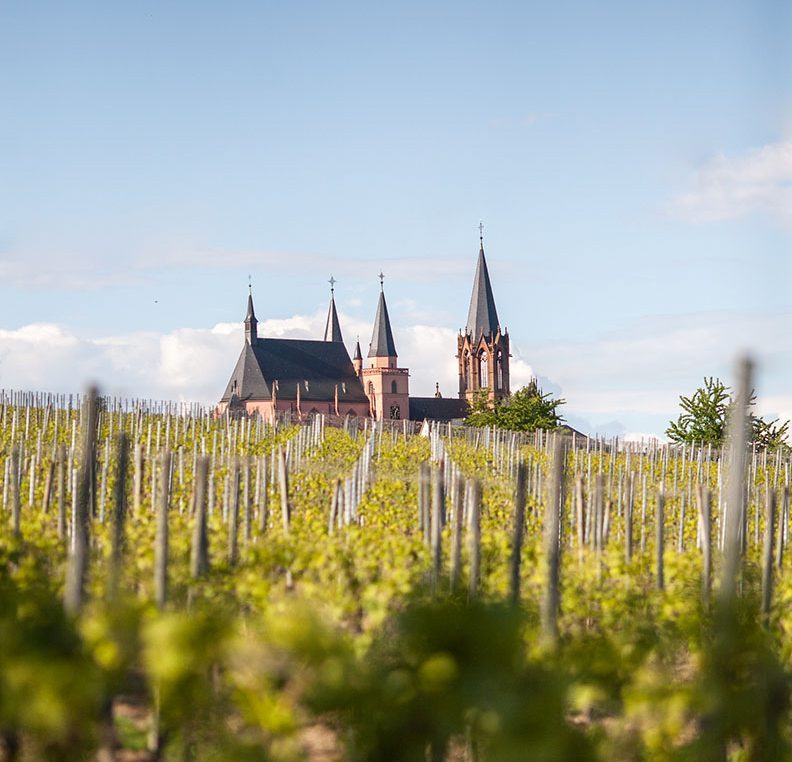
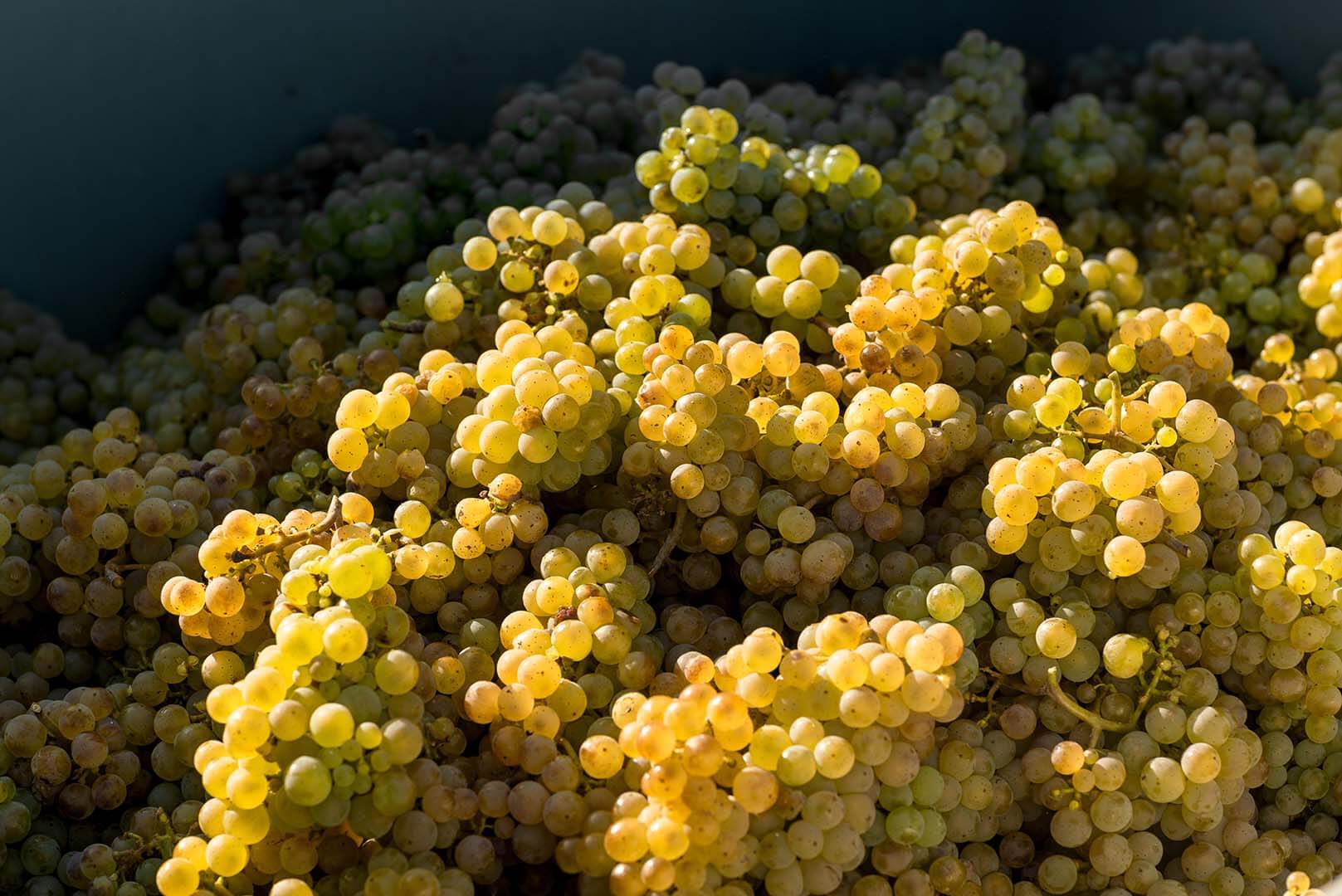
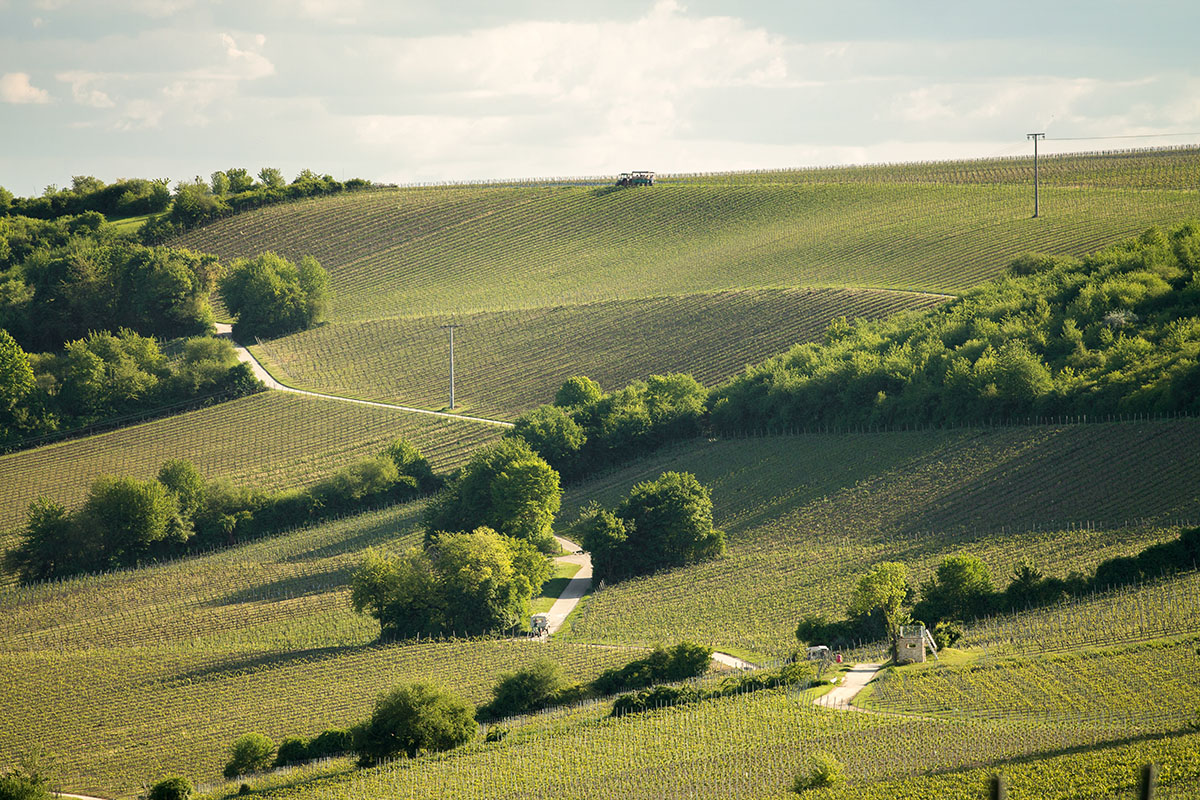
GRAND CRU SITES, HERRENBERG AND SACKTRÄGER
Our vineyards in Oppenheim are located right above the city, on its highest elevation, facing the historic architectural ensemble of Landskron Castle and the Gothic church of St. Katharinen. The vines here grow on stony marl and clay, interspersed with limestones. The soil is deep and barren, with a high mineral content. We own two Grand Cru vineyards here.
Whilst the vineyard of HERRENBERG extends along a slope, starting south directed, merging to southeast directed, with an inclination of about 40 percent, the vineyard of SACKTRÄGER seems to be nestled in a cauldron, protected from the winds, the surrounding land and vegetation.
Herrenbergs offers us a wide spread of possibilities for dry and also noble sweet wines, thanks to its different areas and a constant high quality of grapes, from year to year. Sackträger seems to have its own rules.This is a very tiny vineyard, the amount of grapes is limited and a wine from here is only possible in special years, under the perfect conditons.
Herrenberg and Sackträger, two sites, known for powerful and complex Rieslings, which appear full-bodied, with a long finish, accompanied by aromas of yellow fruits and minerality, with high aging potential.
NIERSTEIN
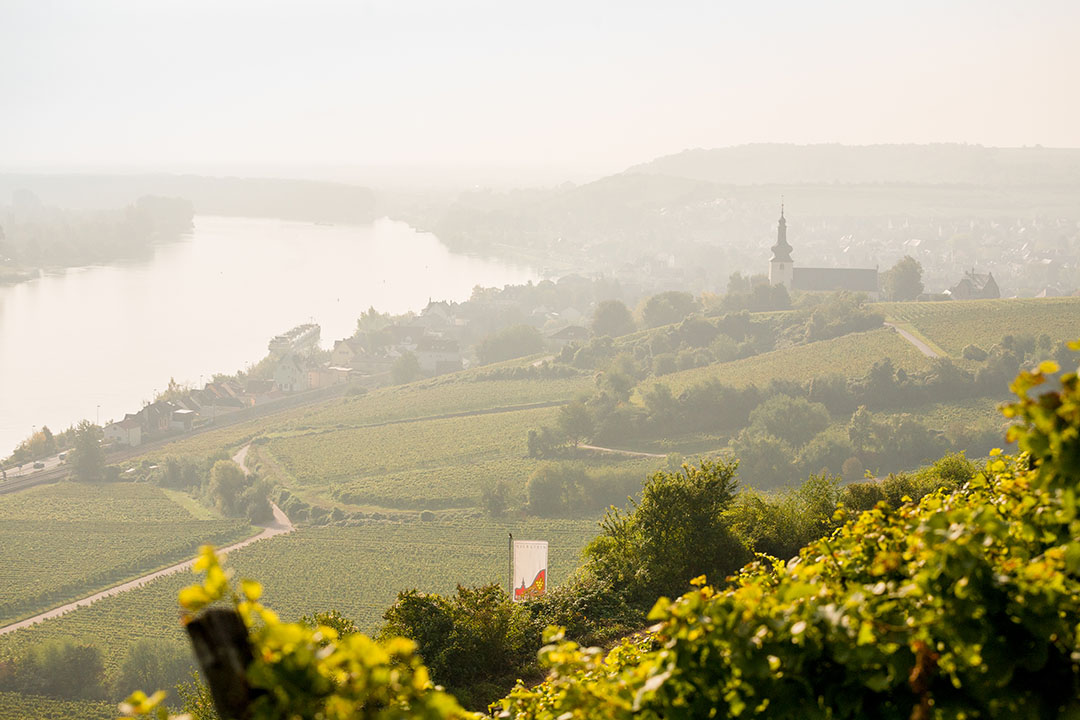
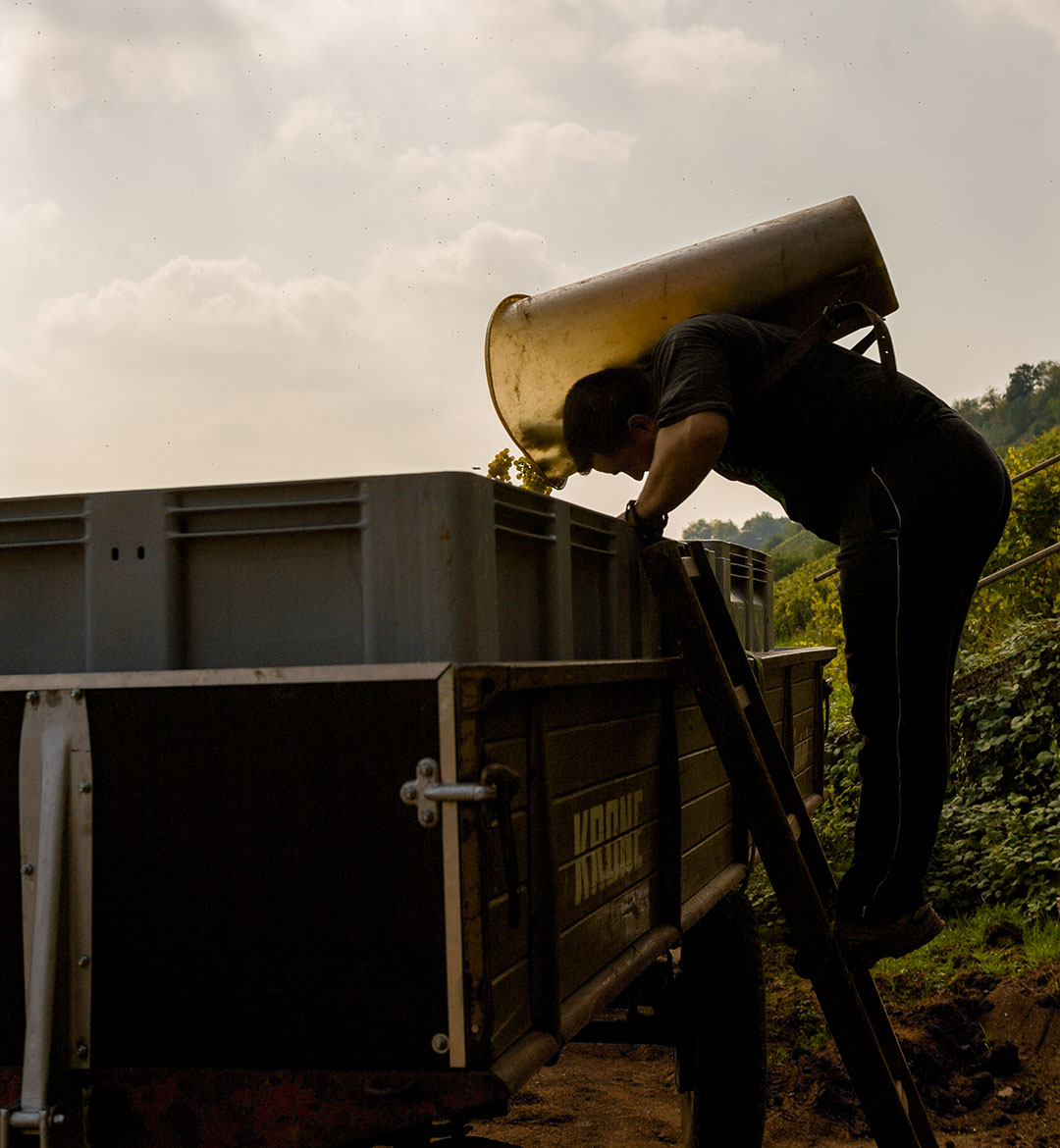
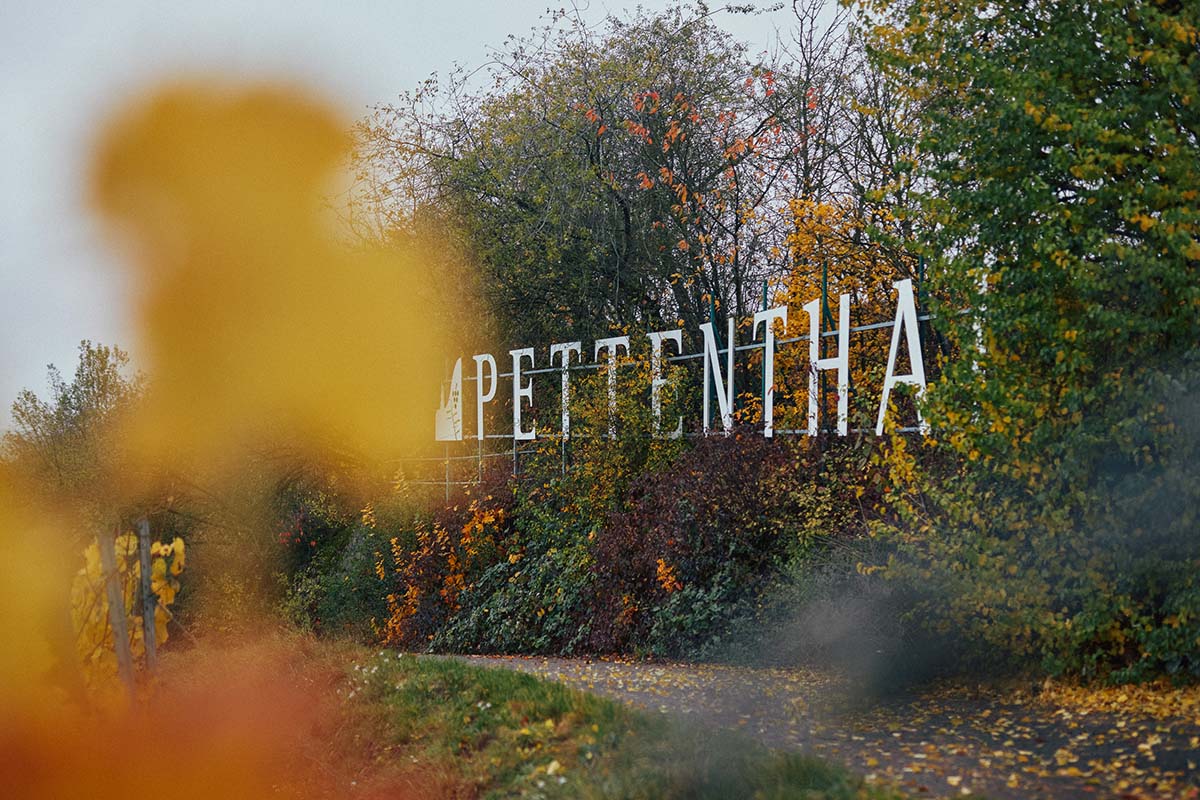
GRAND CRU SITES,
PETTENTHAL AND OELBERG
Passing ROTER HANG in Nierstein, the first thing that you will recognize is its extravagantly colour, which characterizes the whole slope and is responsible for its name. The so-called ROTLIEGENDES is a red luminous clay slate, which, in this form, you will only find at the sites of Roter Hang in Rheinhessen. Coming to Riesling, the vineyards here belong to the best in Germany and are even known to be some of the best sites worldwide.
The parcels are formatted as terraces, stretching from south to southeast above the river Rhine, imitating its concave and convex curvature. This independent design creates areas with different orientations and, in combination with the wind, completely own and unique microclimates arise. The slopes have an inclination up to 70%. This enables warming the stony soil, thanks to the reflection of the sun‘s heat by the water surface of the river, even after sunset. The soil, its vineyards and the wines are pure minerality. PETTENTHAL and OELBERG stand for wines of an unique aging potential and an exceptional character and taste, that you will recognize ot of hundreds.
THE WINES
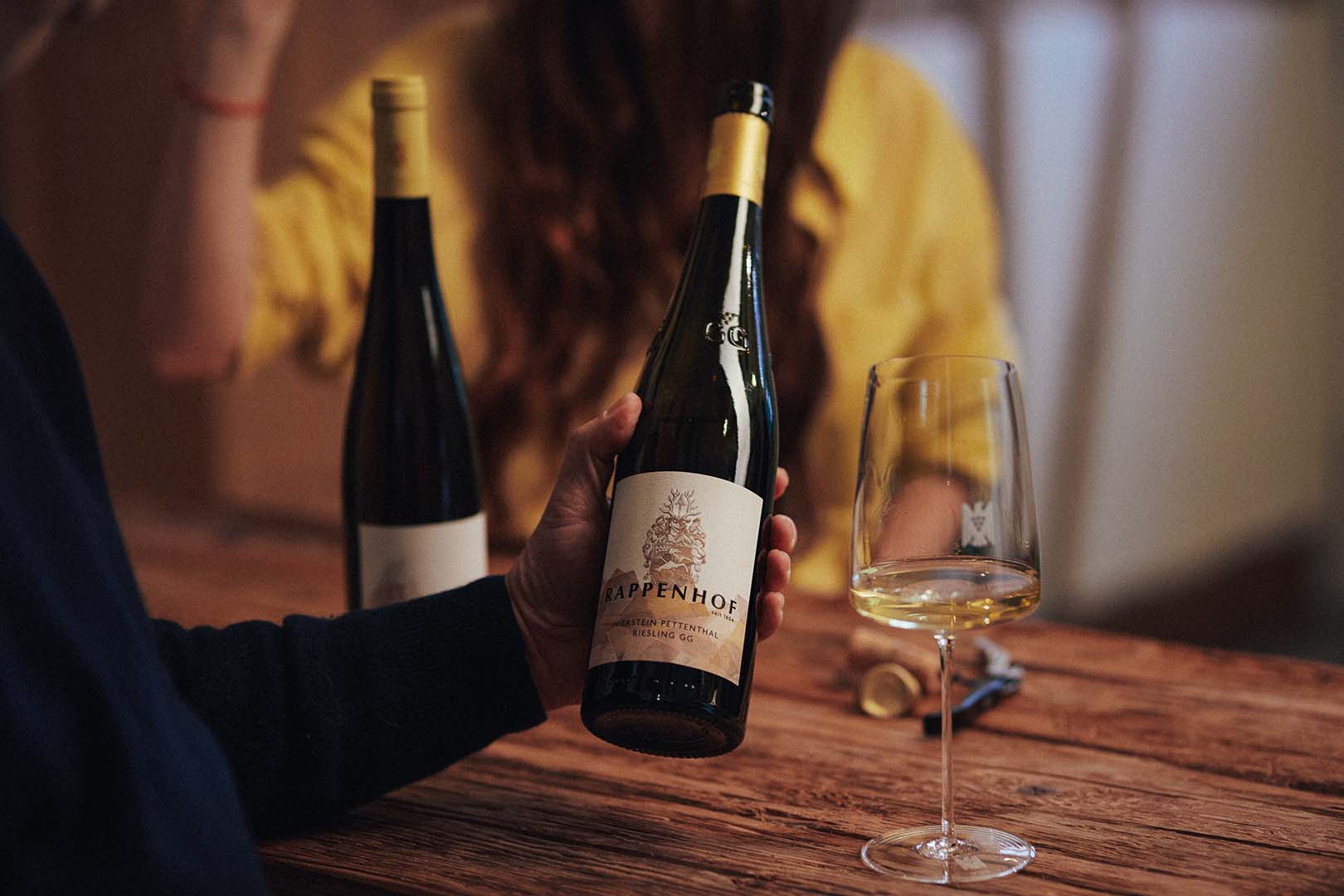
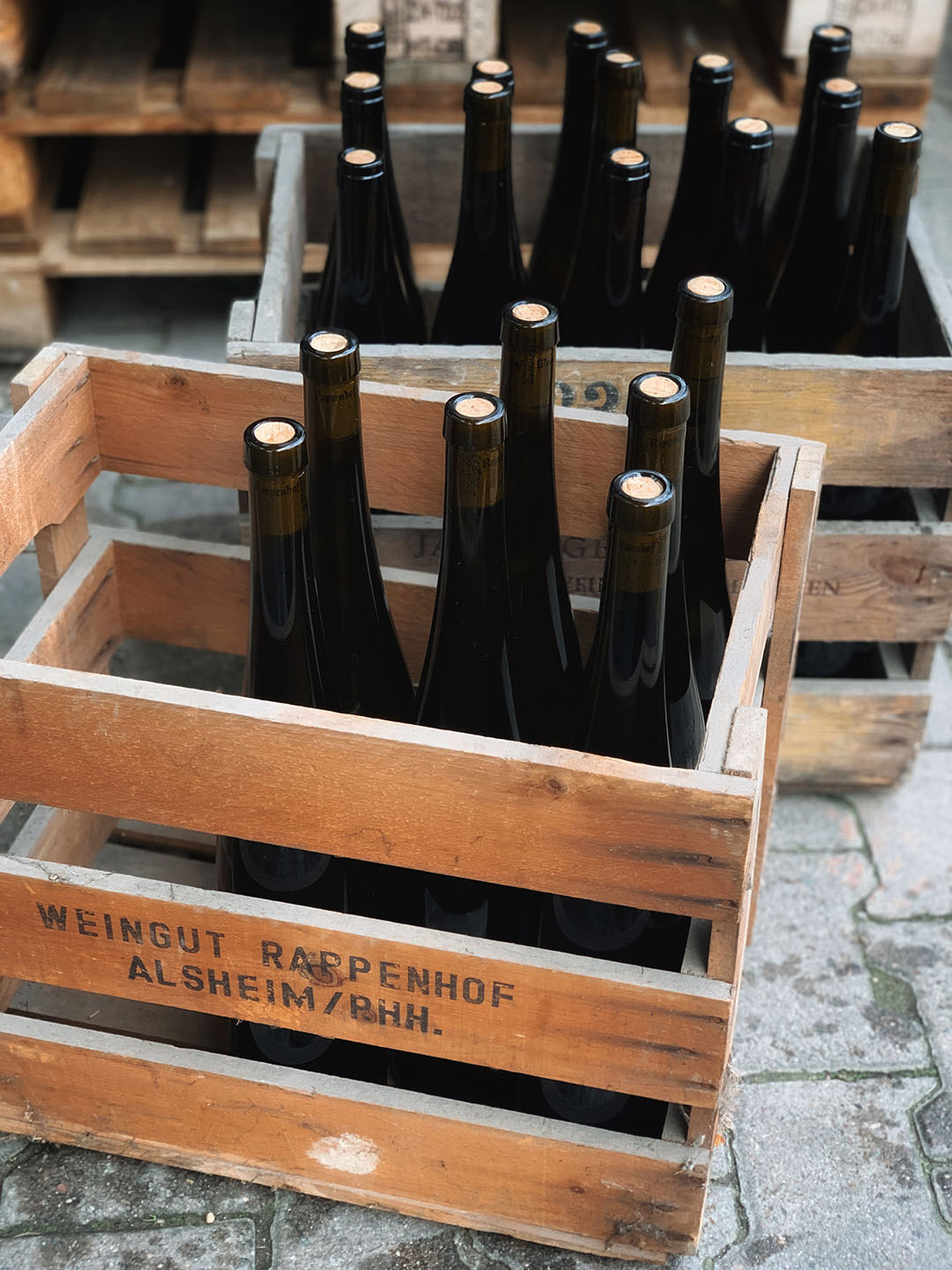
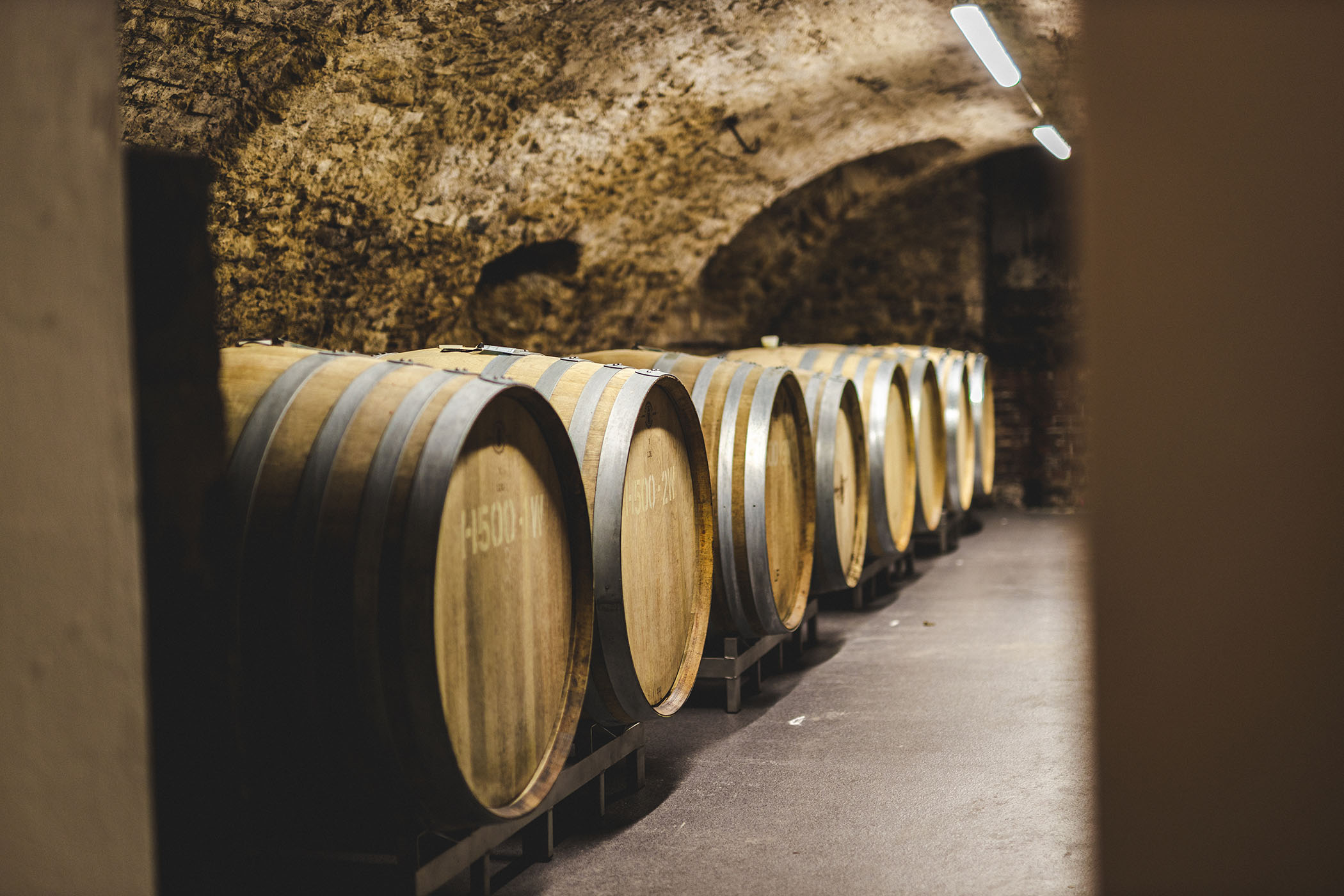

SEKT
bubbly wines
The refreshing answer to champagne.
From the grape varieties Pinot Blanc, Chardonnay, and Pinot Noir, we also produce sparkling wines in addition to our still wines.
The grapes for these come from our loess sites in Alsheim, from vineyards with OLD VINES. They are characterized by a fruity character and a long-lasting mouthfeel.

VDP.GUTSWEIN
’Estate Wine’
VDP.GUTSWEINE, or regional wines, originate from an estate’s holding within a region. They are entry-level house wines that meet the general standards prescribed by the VDP and provide a good introduction to the VDP hierarchy that inherently links wine quality with origin.
In honor of Hieronymus Hirsch, our ancestor, 1st generation, and founder of our winery, and in loving memory of Alexander Muth, 13th generation, our VDP.Gutswein wines bear the name HIERONYMUS AND ALEXANDER.

VDP.ORTSWEIN
’Village’
VDP.ORTSWEINE, ‘Village’or village wines, originate from a village’s good, traditional vineyards that are planted with grape varieties typical of their region.
Often, the labels of these TERROIR WINES indicate the particular soils in or around the village in which the grapes were grown.
100% old vines
100% handpicked
100% wooden barrel fermented

VDP.AUS ERSTEN LAGEN
’Premier Cru’
VDP.AUS ERSTEN LAGEN, ‘Premier Cru’ designates first-class vineyards with distinctive characteristics. They provide optimal growing conditions, as evidenced over a long period of time. The sites are carefully determined and demarcated by the VDP regional associations.
Our VDP.Aus Ersten Lagen Rieslings come from three different villages and grow on three different soils. Alsheim with LOESS, Oppenheim with LIMESTONE, and Nierstein with RED SLATE mean three wines of terroir and origin pure.
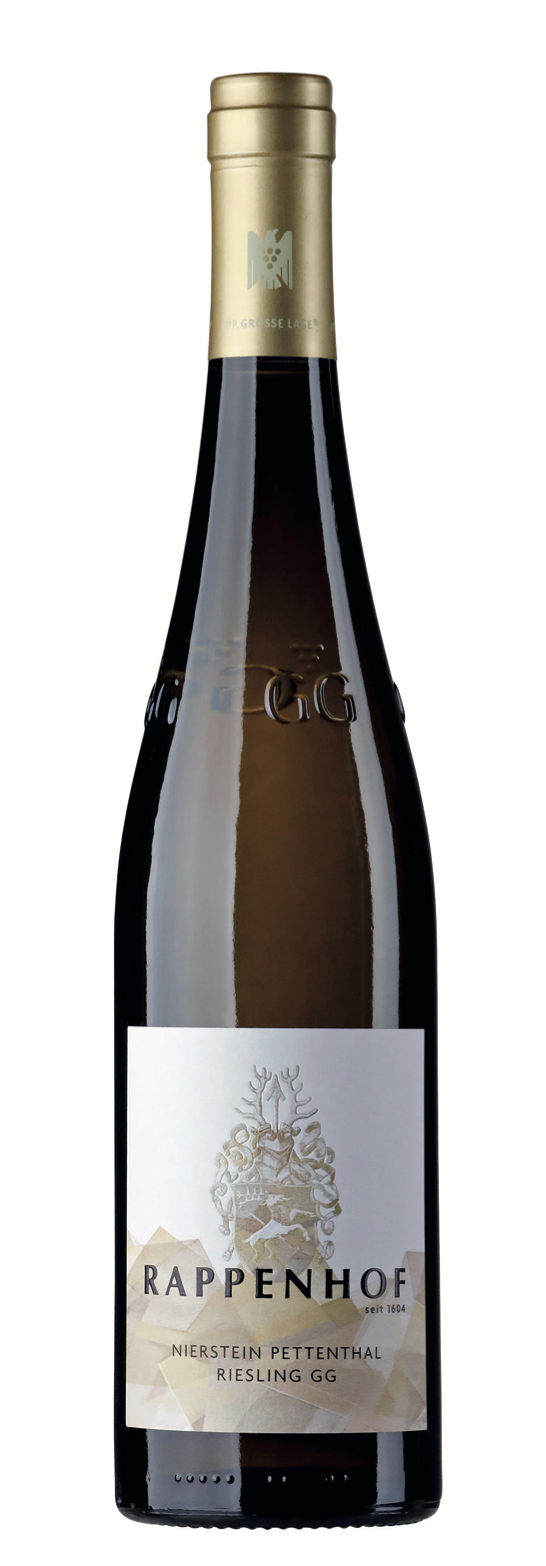
VDP.GROSSE LAGE
’Grand Cru’
VDP.GROSSE LAGE are the very best vineyards in Germany that reflect site-specific characteri- stics. They are expressive, rich in complex aro- mas and have an exceptional aging potential. VDP. GROSSES GEWÄCHS or GG is a dry wine from vineyards classified as VDP.Grosse Lage.
The grapes of these vineyards are perfectly sui- ted for noble sweet wines, too.The particularity of the sites, with a unique characters and excep- tional qualities, offer ideal conditions for excel- lent wines with high aging potential.
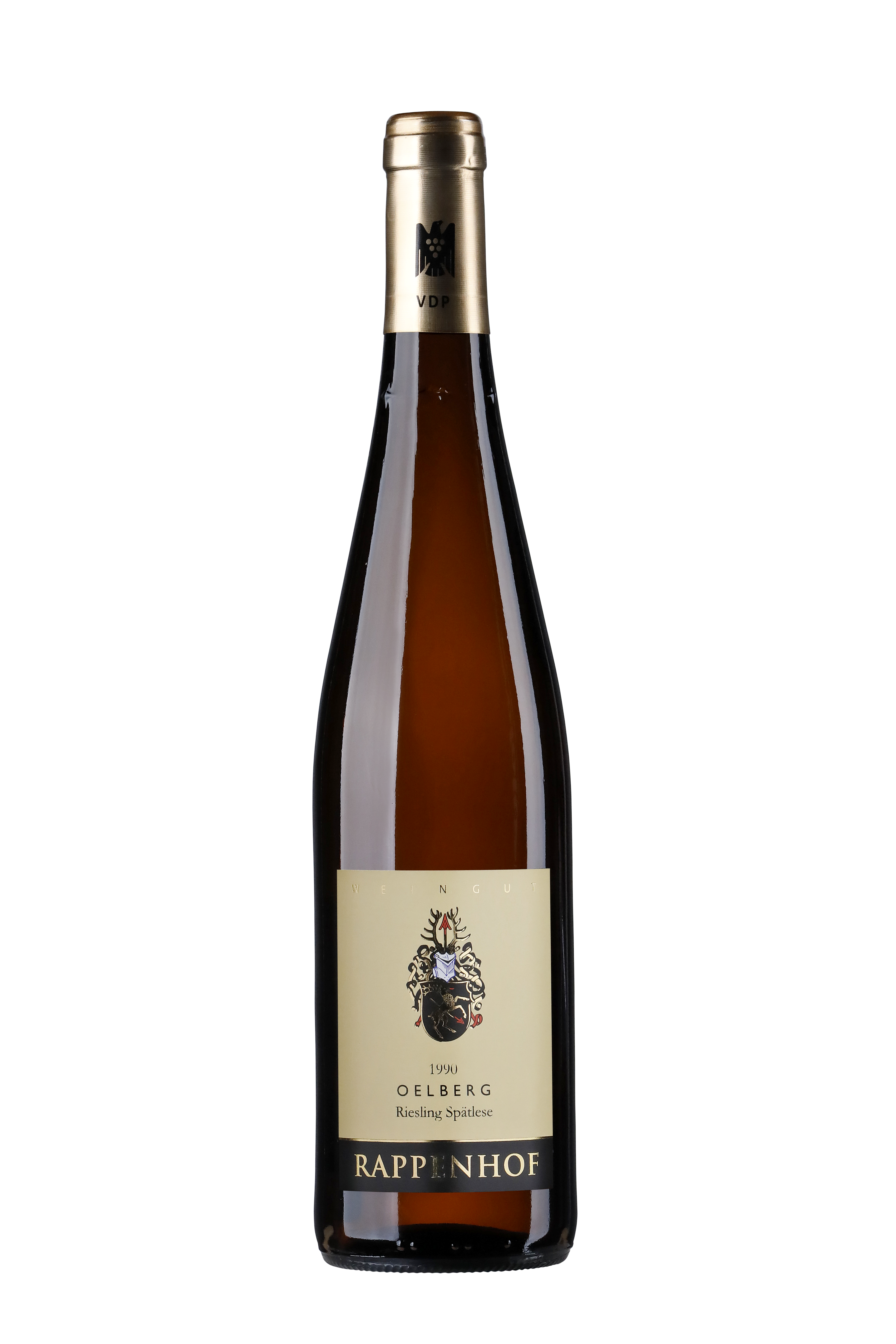
TREASURE CHAMBER
minimum 10 years of bottle aging
Our treasure chamber gives our wines the time they need to develop their full potential. It can take years and decades for a wine to evolve its complexity and terroir characters.
Here, we store GGs and PRÄDIKATSWEINE, such as Kabinett, Spätlese, Auslese, Beerenauslese (BA) and Trockenbeerenauslesen (TBA) from selected vineyards.
The wines in our treasure chamber go back to the vintages of the early 1960s.
WEINGUT RAPPENHOF
since 1604
VDP.WEINGUT
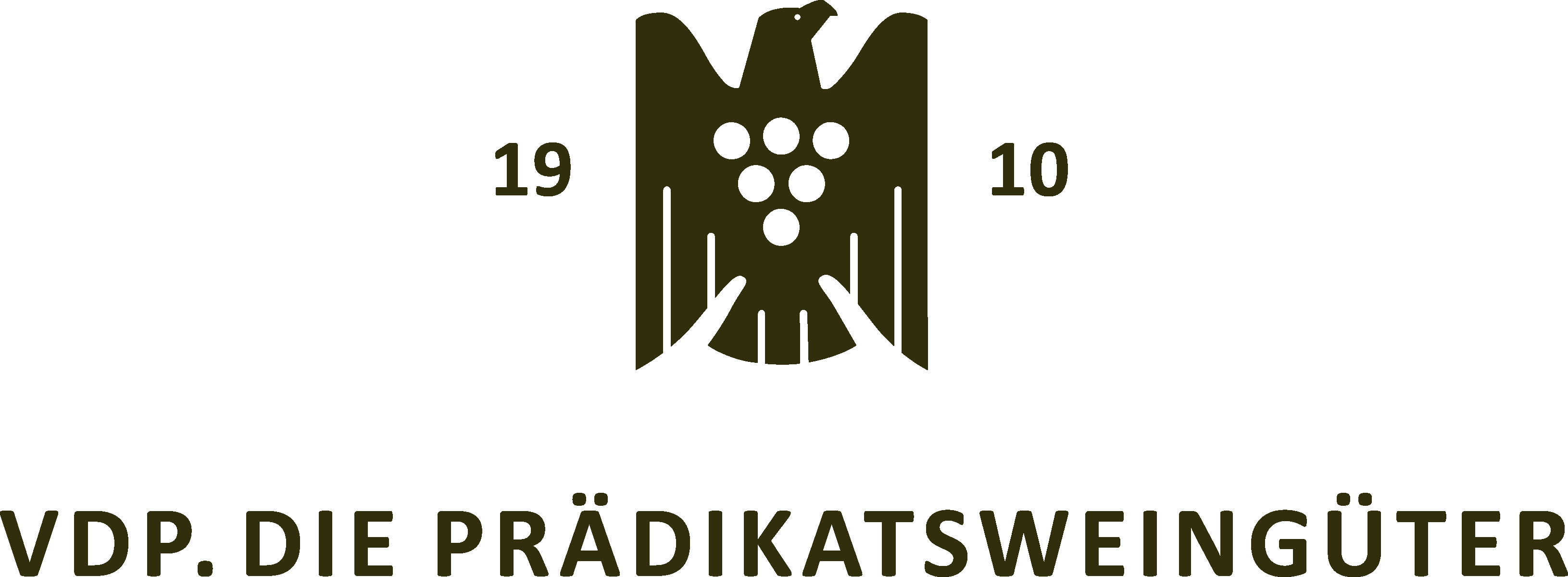
visit us
Bachstrasse 47 · 67577 Alsheim · Rheinhessen
opening hours
Monday to Friday · 8.00 am to 12.00 am · 1.00 pm to 5.00 pm